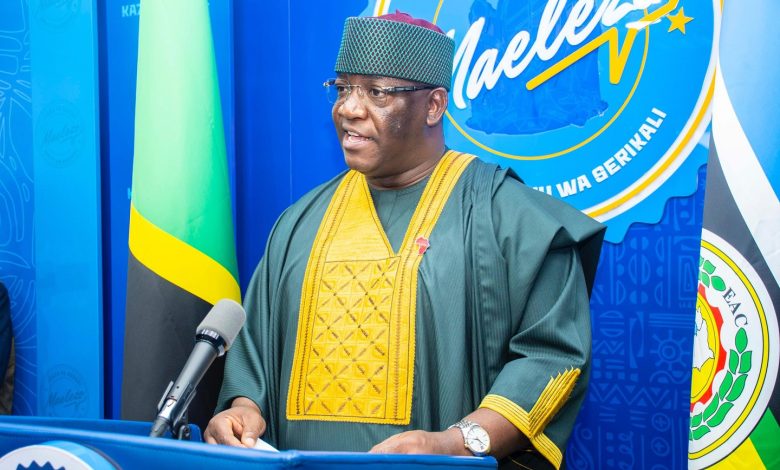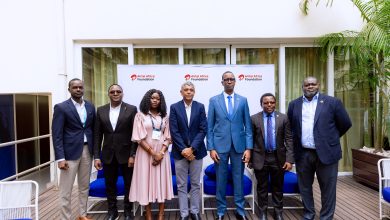Mwanza targets bigger GDP share

DODOMA: MWANZA Region is eyeing a historic increase in its contribution to the national Gross Domestic Product (GDP), targeting a rise from 7.2 per cent to 10 per cent, driven by massive investment in strategic infrastructure and service delivery projects valued at over 5.6tri/-.
Mwanza Regional Commissioner Said Mtanda told journalists in Dodoma yesterday while highlighting the region’s growth trajectory under the leadership of the sixth-phase government led by President Samia Suluhu Hassan.
“Mwanza remains one of the most strategic regions in Tanzania and is currently ranked second after Dar es Salaam in terms of GDP contribution. With the pace of development we are seeing, we believe reaching the 10 per cent mark is within sight,” he said.
He cited the sixth-phase government’s commitment to large-scale infrastructure development including the 3.06tri/- Standard Gauge Railway (SGR) from Isaka to Mwanza and the 716.3bn /- Kigongo–Busisi Bridge as key enablers of the region’s economic transformation.
Other flagship projects completed include the 120.6bn/- MV Mwanza “Hapa Kazi Tu” ship, the Nyegezi main bus terminal, Nyamhongolo truck terminal and the Mwanza modern market worth 26.6bn/-.
He said Mwanza has received substantial government funding compared to many regions, resulting in visible transformation in infrastructure, economic activity and citizens’ wellbeing.
“These projects are significantly improving connectivity, trade and public service delivery, setting Mwanza on a firm path to achieving its 10 per cent GDP contribution goal,” he added.
Over the past five years, Mwanza has received 5.6tri/- from the central government for development initiatives across sectors. Revenue collection also rose from 44.2bn/- in 2020/21 to 70.7bn/- in 2024/25, a 60 per cent increase.
Cumulatively, councils have collected 216.2bn/- during the period. In health, 63.2bn/- has been invested to enhance services.
The region now offers specialist treatment in orthopaedics, surgery, ENT, reproductive health and internal medicine reducing dependence on external referrals.
Bugando Zonal Referral Hospital has undergone significant upgrades and the 25bn/- construction of a regional referral hospital in Ukerewe is ongoing.
ALSO READ: How Katavi boosts domestic investments
The number of health professionals increased from 2,855 in 2020 to 4,150 in 2025 and access to essential medicines rose from 77.89 to 92.29 per cent.
In education, 196.8bn/- was spent on classroom construction, school expansion and student support. Primary schools increased from 873 to 930, and secondary schools from 219 to 308.
A total of 1,402 new primary classrooms and 2,567 for secondary were built, while bursaries enabled 485 girls to return to school.
“Pass rates for Form Four rose from 88.37 per cent in 2021 to 96.34 per cent in 2024 and Form Six results reached 99.76 per cent,” he said.
Mr Mtanda said a 264.8bn/- investment in water projects, has increased access to the precious liquid in urban areas from 57 to 85 per cent, and in rural areas from 57 to 77.8 per cent.
The 71.6bn/- Butimba water treatment project, producing 48 million litres daily, is among the flagship water initiatives.
He cited the 71.6bn/- Butimba water treatment project, which is now producing 48 million litres daily, as a game-changer in Mwanza’s water supply.
In the roads sector, more than 156bn/- was spent, expanding paved roads from 76.82km in 2020 to 103.08km in 2025. Major bridges including Simiyu, Sukuma and Mabatini were also constructed.
On energy, over 110bn/- was used to extend electricity to 522 villages and over 1,800 sub-villages, reaching 100 per cent connectivity in mainland villages, with solar energy powering islands.
The RC said Mwanza’s fisheries sector also thrived, with income rising to 8.2bn/- in 2025, up from 4.4bn/- in 2020, marking an increase of 3.8bn/-.
Also, the number of modern fish cages increased from 1,664 to 2,715.
He said that in 2024, a total of 43,657.6 tonnes of fish fillets and 81,812 tonnes of fresh fish were exported via Mwanza Airport, while swim bladder exports rose from 431,721kgs in 2020 to 495,448kgs in 2024.
On industrial development, the number of large factories increased from 46 to 50 and small and micro industries rose from 1,776 to 2,322. Nearly 6,000 new businesses were reg





